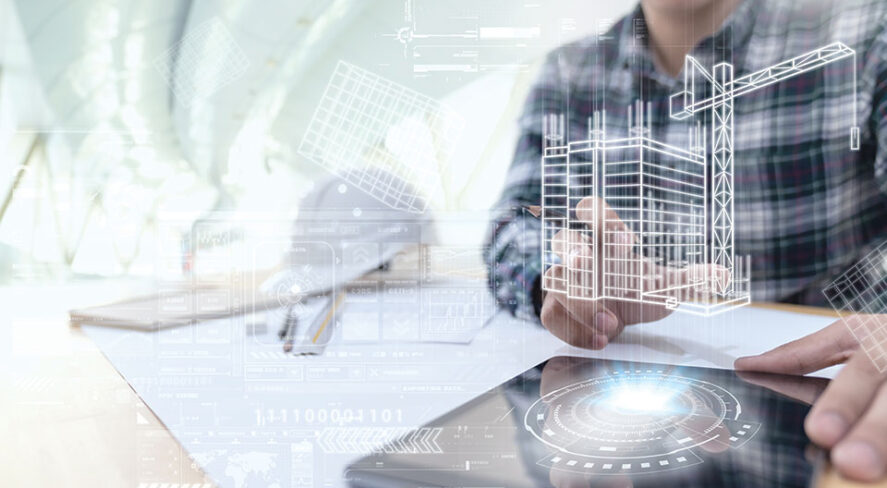Digital Twins and the Future of Physical Security and Risk Management

Digital Twins Provide New, Dynamic Views of Building Operations

Artificial intelligence (AI) is becoming ubiquitous; however, when it comes to the enterprise, physical security has remained within the domain of forensics, with outdated manual methods and tools keeping these departments in the dark ages. The result: Facilities are managing expensive, inefficient and wasteful physical security protocols.
Beyond cameras and controlled access, enterprises are now, for the first time, able to harness the gold mine of data held in their security systems, Internet of Things (IoT) devices, IT infrastructure, internal regulations and regulatory compliance documentation. This data can be used to visualize all systems and map them to an organization’s physical security risks, both internal and external, and show how they are interconnected within the facility and the business operation.
Risky Business
The outdated, manual, analog tools that enterprises have been using are not fit for purpose. Ill-equipped contractors using legacy tools and methods expose enterprises to physical and cyber risks that can cost them millions of dollars.
Tools like spreadsheets and CAD files are not only static, error-laden and stored locally, but they are also siloed. Companies that are still working with these tools face knowledge gaps, lost documentation and duplicated efforts from design through the entire lifecycle. Leveraging data is critical for efficiency, performance and savings in security system design and operations.
Today’s technology advances, such as cloud computing, deep learning and IoT, enable the application of enterprise data to mitigate risks and accurately and efficiently manage facilities’ security systems.
During the past 10 years, enterprises have started to apply AI and deep learning to building systems, in some cases reducing management costs by 70% and system design time by a massive 90%.
With the role of data central to the operations and planning of security systems, security executives must work closely with data scientists and expand their skill sets if they want to keep up.
By using convolutional neural networks, graph neural networks and other deep learning architectures, solutions can automatically and quickly classify floorplans and detect features (doors and windows) and objects (desks) within each space in a facility, then generate outputs including recommendations, 3D models or building system designs.
All changes are documented and stored, and any iterations are already automatically compliant with regulations. As a result, security systems within multifacility enterprises are efficient, compliant and secure at a fraction of the cost of previous methodologies.
Why Are Digital Twins Needed?
Building data can be used to develop a 3D model, which, when combined with real-world data, creates a “digital twin” – a virtual representation of the physical environment. This functionality is changing the game for security teams.
Big-picture visualization of data across hundreds of facilities – floor plans, devices, furniture, door types – provides security professionals with a macro view of all system components across the global network of buildings.
The combination of digital twin technology with AI unlocks the true promise of the technology – the ability to both see and automate key processes for managing security systems. Now, arduous tasks such as vendor management, warranty renewal, and budget projections and modeling can be completed with precision in much less time than when done manually.
Not only can the technology identify risks, but it can also immediately provide remediation alternatives. For example, if there is a compliance issue, an alert is sent to the security team, which can then easily access floor plans, add or move a camera, arrange for a device’s installation, and automatically update the documentation.
Tech-Enabled Readiness for Anything
The adoption of digital twin technology will change the management of real estate. Security executives will need to work closely with the CTO and develop new skills to manage and plan multi-level security strategies. This new technology makes it possible for them to model and evaluate physical security system performance under specified conditions of threat and system operation.
For example, security system design might require an analysis of the interactions of basic security functions within a facility. During an event, personnel must be able to determine how many entrances and exits a building has and what kind of locking mechanisms are in place.
In an emergency, floor plans and vendor information must be easily and quickly accessible, which is impossible if they are only stored locally on someone’s desktop. Equally, if there is a change of use of the facility, the security team must be able to see floor plans, device information and regulatory guidelines in order to document the changes and make sure they are compliant.
Security is dynamic, and digital twins ensure that appropriate personnel have access to all relevant building data as they need it, and that documentation is readily available. Full oversight of a facility’s system data enables always-on security teams to keep up with changes and company needs.
Considerations for System Design
Designing a building’s security system is a complex process in both new builds and retrofits or renovations. There are countless considerations and data points that are virtually impossible to manage manually or with analog technology, from usage, layout or location of different departments to security camera placement and door types.
This is where working with digital twin technology presents the most significant impact for security system designers. The technology can model the features of a building in accordance not only with a company’s internal rules and guidelines but also with government regulations. For instance, server rooms must only have one entry point, so not every space within a facility would be appropriate for this function. If a server room was planned with AI and digital twin technology in a location with two doors, it would be automatically flagged.
This technology reduces system and infrastructure design time from months to days. It also mitigates operational costs associated with outside contractors, errors, rework and compliance breaches.
Beyond design and management of security systems, AI and machine learning streamline workflows and provide valuable insights for internal processes. The technologies automate approvals for changes and iterations and integrate with existing company systems for full visibility and access. Further, they unlock critical business and industry landscape insights by benchmarking operational performance against other facilities within the same region, business or industry. The C-suite can use these insights to make informed business strategy decisions.
From everyday maintenance to design, business strategy and internal operations, AI and digital twins are improving the performance of security teams around the world as they design, plan and manage safe, secure and compliant buildings.
